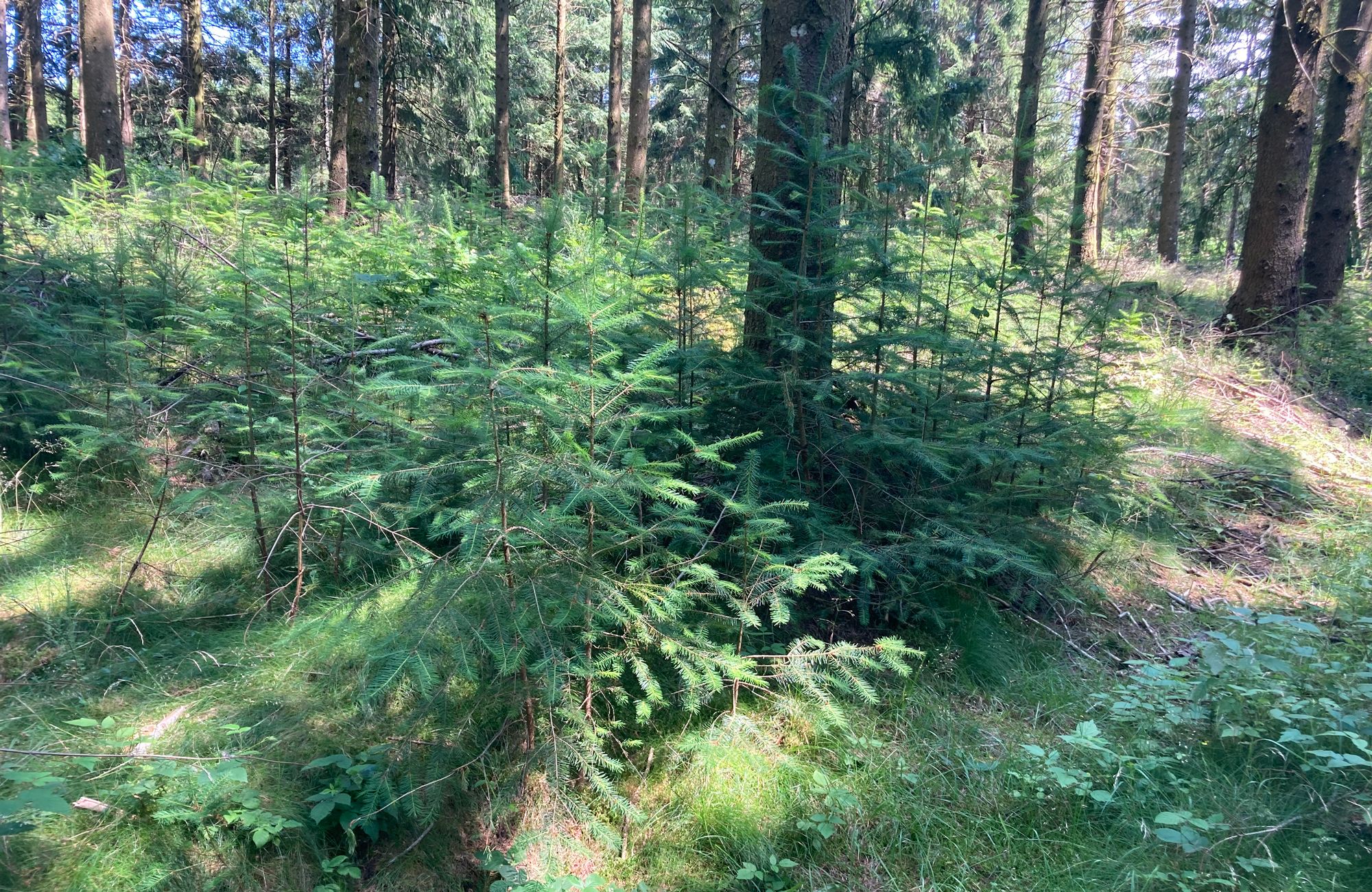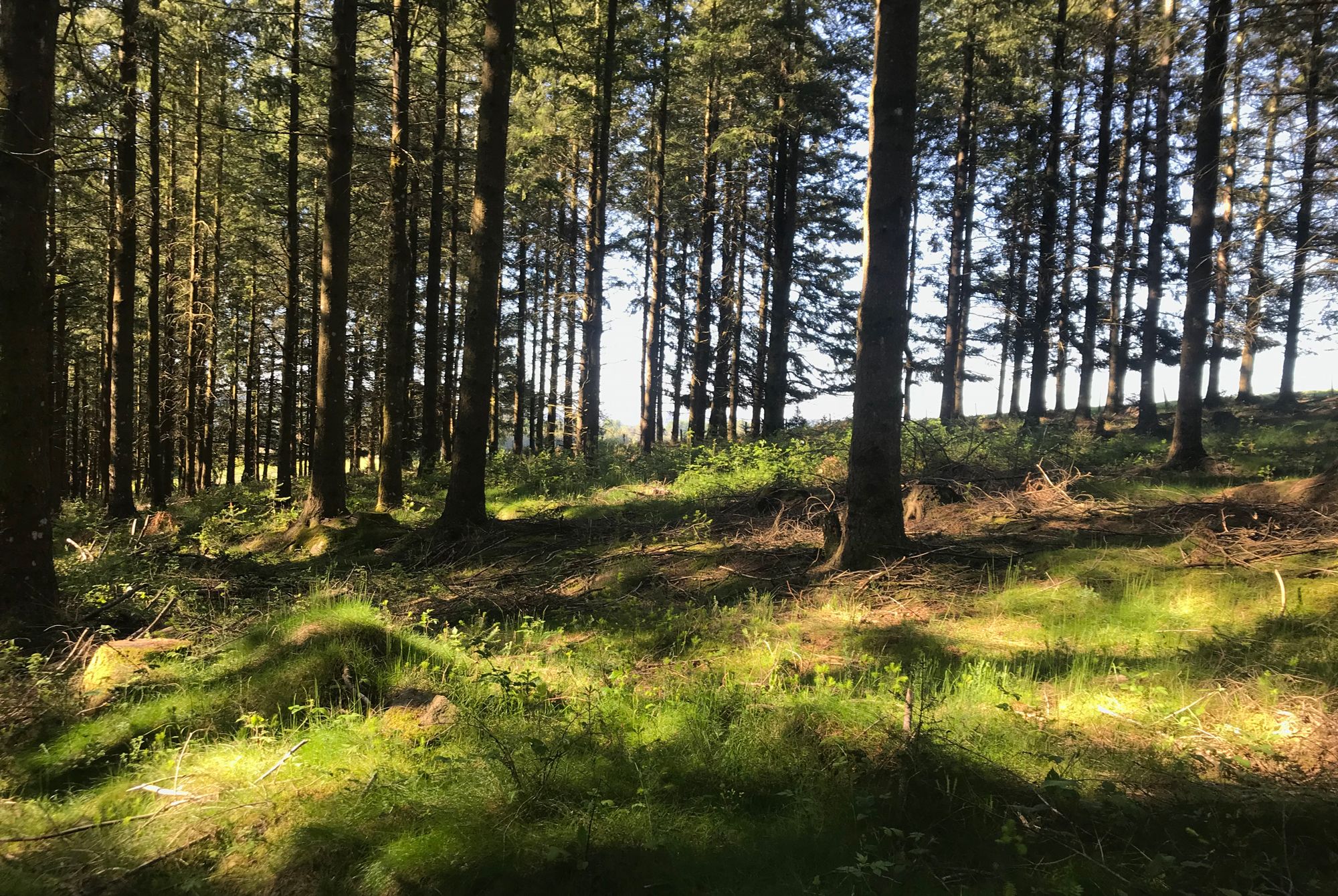Located in the heart of the Millevaches Regional Nature Park in Corrèze, the Peyrelevade project aims to reconstitute a diversified forest while respecting the natural growth and renewal processes of forests. Reforest'Action chose the Assisted Natural Regeneration (ANR) method to enhance 14,700 trees within this natural conservation site, which is part of the Natura 2000 protected areas network. Sasha Pinot, project manager for France at Reforest'Action, provides insight into why this method was chosen, its advantages, and the expected benefits of implementing the project within the framework of climate change adaptation.

What does the Peyrelevade project, in the Limousin region, involve?
Sasha Pinot : This natural regeneration project aims to revive a diverse forest ecosystem while meticulously honoring the natural processes of growth and renewal. Today, 14,700 trees of diverse species including Douglas fir, larch, spruce, fir, and oak are being nurtured through meticulous care and effort. Ultimately, this forest in the making will contribute to local economic development, supporting the timber industry. Restoring this degraded ecosystem will help preserve the forest atmosphere and its picturesque landscape. Home to a rich biodiversity, this forest will also contribute to carbon storage and play a role in combating climate change. Located in the heart of the Millevaches Regional Nature Park in Corrèze, Limousin, this natural site holds a special place within the Natura 2000 network, a European initiative dedicated to conserving habitats and species of importance.
What history does this forest have?
Sasha Pinot : Both plots have been planted with Douglas fir, spruce, and Scots pine for the past 35 years. They intended to undergo clear-cutting in the years to come, to harvest the wood produced, and then to be replanted following the same intensive pattern. Clear-cutting involves abruptly opening up an area, resulting in the long-term destruction of many natural habitats essential to certain species. In most cases, it also involves the use of heavy machinery, which destroys soil life by compacting and plowing large areas.

How is the implementation of an ANR project necessary to restore it?
Sasha Pinot : One of the primary objectives of this project is to halt the forest degradation caused by strict and simplified forest management practices. By embracing a gentler approach, such as Assisted Natural Regeneration, landowners choose not to disrupt the forest's delicate balance. To achieve this, they observe natural processes and only intervene when necessary, in specific areas. Movement within the plots is restricted to designated paths to prevent unnecessary soil compaction. This method not only allows natural cycles to unfold but also enables the silviculturist to reduce their workload, as much of the forest's maintenance is carried out naturally.
How were the species chosen for the project?
Sasha Pinot : The project promotes a variety of tree species, such as Douglas fir, larch, spruce, fir, and oak, each serving multiple functions. These species are selected from both hardwood and softwood groups and are chosen for their excellent adaptation to the site conditions. Intending to achieve 80% natural regeneration, the project also fosters the growth of other species already present in the soil through their existing seeds.
What's the difference between the ANR method and conventional silviculture?
Sasha Pinot : Today, French forests confront numerous threats, notably those stemming from climate change. In response to these challenges and as a departure from conventional silviculture practices, the proprietors of the Peyrelevade plots have opted to transition towards Assisted Natural Regeneration.
The main distinction between intensive forestry and Assisted Natural Regeneration (ANR) resides in ecological succession. In a natural forest, the process begins with the germination of a select few trees. As the canopy matures and closes, conditions of shade and humidity become conducive to the development of more delicate forest species in the understorey. This understorey strengthens the ecosystem's structure, facilitating the establishment of plants over the long term until they reach maturity. Occasional disturbances, such as storms or natural die-offs, then stimulate the vitality of the ecosystem. A natural forest represents a mosaic of these stages, amalgamating diverse functional groups that mutually support one another.
In contrast, within intensively managed forests, vulnerable trees are typically planted on bare ground, thereby exposing them to various risks such as drought, flooding, and wildlife damage. Often comprised of only one or two species, these forests exhibit a simplistic environmental structure characterized by a singular stratum. Upon reaching maturity, all trees are harvested, necessitating a complete restart of the cycle. Such artificial forests lack resilience to disturbances and significantly curtail the environment's capacity for natural evolution. However, it is imperative to enhance the resilience of our forests to ensure the continuity of their ecosystem services. Through the decision to honor the natural cycle of their forest and embrace ANR management, the proprietors of this project significantly enhanced their forest's capacity to withstand diverse threats.
How will the forest, restored through Assisted Natural Regeneration (RNA), be more resilient in the face of climate change?
Sasha Pinot : This will be the case on five levels:
- The enhancement of ecosystem stability is notable. Without the disruptive effects of clear-cutting, natural forests maintain a consistent vegetation cover, yielding numerous benefits. Minimal fluctuations in humidity and temperature prevail, as the soil remains shielded from direct sunlight and air currents. The intricate structure of the ecosystem endures, serving as a habitat for a myriad of species, each fulfilling its unique role. The absence of habitat destruction fosters the proliferation of diverse life forms.
- Trees derive added benefits from supplementary resources. Depending on the species, roots extract water from various depths. The diversity of these root systems enables the exploration of a broad spectrum of water sources, crucial during periods of escalating drought. Moreover, this subterranean complexity contributes to soil structuring, mitigating erosion.
- The diversity of tree species aids in regulating pests and diseases, which are primary contributors to forest degradation. Predominantly, these issues arise in stands with limited species diversity, as they lack natural predators. In a diversified forest, all species—including animals, plants, fungi, and microorganisms—compete, thus restoring equilibrium between predators and prey.
- Game damage will be minimized. Trees grown from natural seedlings are considerably less appealing to wildlife than those raised in nurseries.
- In the long term, the forest will yield greater profitability. A diverse array of tree species ensures a harvest, even in the event of disease affecting one species. Additionally, the fertility of the environment is sustained through a dynamic cycle of organic matter, with minimal impact on the soil.
Why talk about sustainable forest management when it comes to ANR?
Sasha Pinot : By choosing Assisted Natural Regeneration, landowners cultivate high-quality wood while preserving a diverse and thriving biodiversity within the ecosystem.
Living, productive forests naturally form across the globe, independently of human intervention. Nature provides the necessary seedlings and optimal conditions for their growth, while the diverse flora and fauna maintain a delicate balance against diseases and pests. In the natural cycle, when a tree reaches the end of its life, it falls, creating space for new growth. Young trees from natural regeneration take advantage of these openings, thriving until the canopy is restored. The Assisted Natural Regeneration (RNA) method respects these intrinsic natural principles while favoring the growth of the most beneficial trees.
The species present in the Peyrelevade stand have organically developed. A significant portion of them is local, with genetics finely attuned to the specific conditions of the region. Over time, the stand undergoes natural evolution, favoring only the most competitive and adaptive species.
Numerous instances in the region showcase owners aligning their management practices with natural processes. Situated at the heart of the Millevaches Regional Nature Park, the Peyrelevade project actively contributes to this network, gradually restoring the French forest to its historical state. Its PEFC certification serves as additional confirmation of its commitment to sustainable management, reflecting a comprehensive understanding of the forest's multifunctional role. The PEFC label assures the stringent adherence to precise regulations by all forest stakeholders, including owners, operators, and forestry contractors.
To obtain the PEFC label, various commitments must be upheld, including promoting a diverse array of tree species, abstaining from fertilizer use, safeguarding soil integrity, preserving local fauna and flora, and maintaining dead trees, essential for biodiversity promotion.
How does RNA contribute to sustainable wood production?
Sasha Pinot : The overarching goal of the Peyrelevade project is to establish a diversified, multifunctional, and resilient forest, while simultaneously benefiting the local economy.
Unlike conventional silviculture, timber is not harvested from a large area in a single block. The forest's intricate structure calls for more regular, localized harvesting. For instance, rather than harvesting an entire parcel every 80 years, the silviculturist opts to selectively remove only the finest trees every 5 years. Despite the differing approaches, the financial returns remain nearly identical. However, under Assisted Natural Regeneration (ANR) management, the silviculturist benefits from more consistent income.
Implementing this method requires the expertise of skilled tradespeople, and sizable trees must be transported to specialized, smaller sawmills tailored for such operations. These ANR conversion initiatives not only create employment opportunities but also inspire younger generations to acquire and revive traditional knowledge.
Moreover, Corrèze, being a heavily forested region with ample rainfall and a temperate climate, provides an ideal environment for forest development. Given these favorable conditions, the wood yielded by the Peyrelevade project will be of exceptional quality, thereby benefiting the entire local industry, including forest managers, loggers, and sawmill operators.
Une gestion forestière en RNA permet-elle de séquestrer autant de carbone qu’une gestion classique ?
Sasha Pinot : The Peyrelevade project stands out notably for its carbon sequestration capabilities. Similar to conventional plantations, the trees continuously sequester carbon throughout their lifespan. This carbon is responsibly stored when the wood is utilized in construction or furniture. Additionally, the ANR method offers an added advantage over traditional silvicultural practices: the preservation of soil carbon. Unlike forests that export their entire production, this type of forest allows for the unimpeded growth of undergrowth and retention of deadwood. As this organic matter decomposes, the carbon it contains remains within the soil, preventing its release into the atmosphere, a common occurrence after clear-cutting and plowing.
It should be noted, however, that while carbon storage is a good indicator for studying climate change, it cannot be used to judge the quality of a forest. For instance, an intensive Douglas-fir monoculture will sequester more carbon on the same surface area than a diversified forest. Yet it is not sustainable, and its ecological value and resilience are much lower.

As Assisted Natural Regeneration harnesses existing resources to preserve and fortify forest heritage, fostering long-term diversity and resilience, it emerges as particularly pertinent in the face of climate change. However, for ANR initiatives to materialize, funding is essential, notably from companies eager to contribute to forest restoration. Swiss Life Asset Managers exemplifies this commitment by supporting the Peyrelevade project showcased in this article. Across France, Reforest'Action is spearheading ecosystem regeneration endeavors rooted in the Assisted Natural Regeneration method, thanks to funding from dedicated corporate partners.